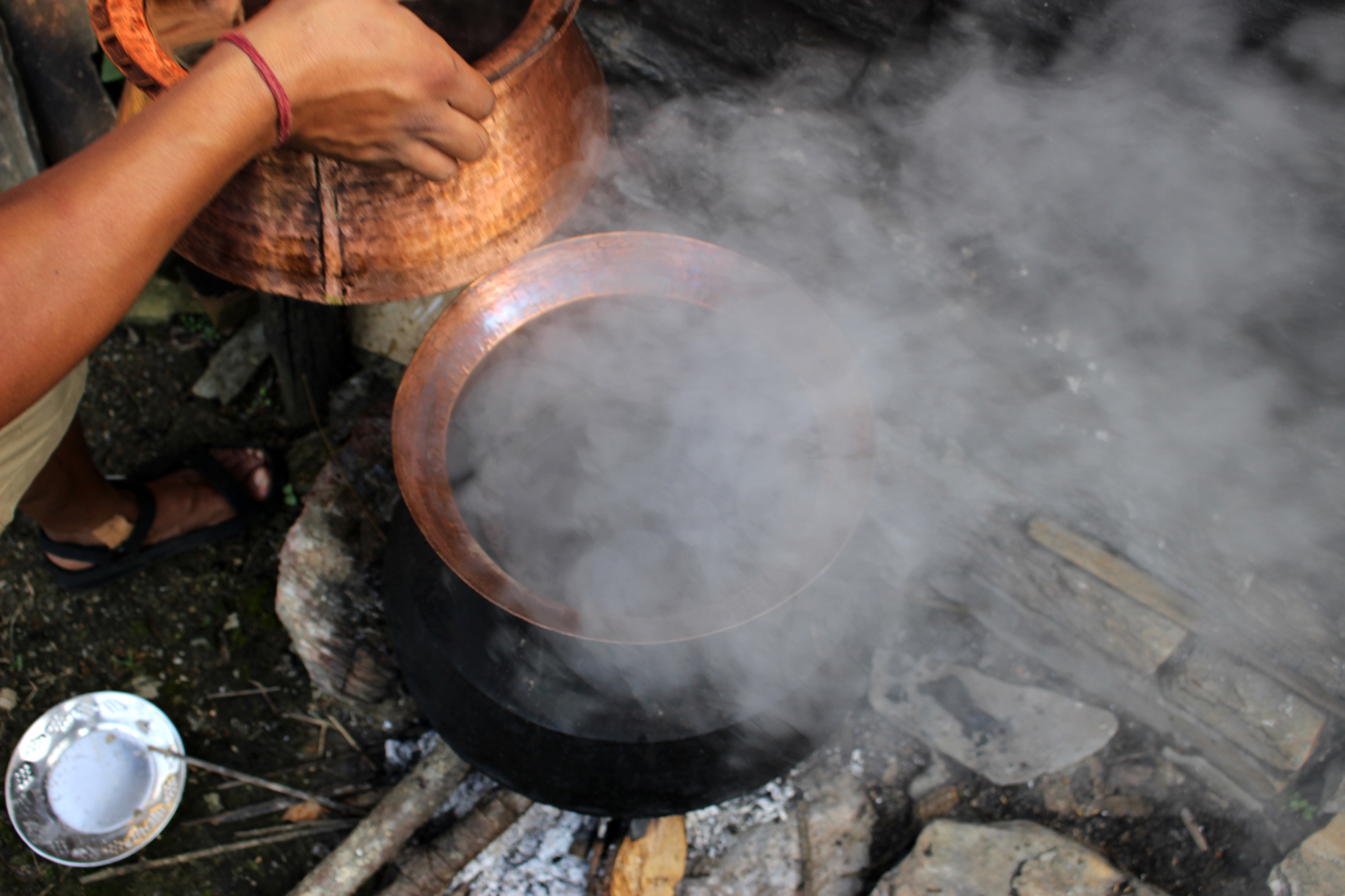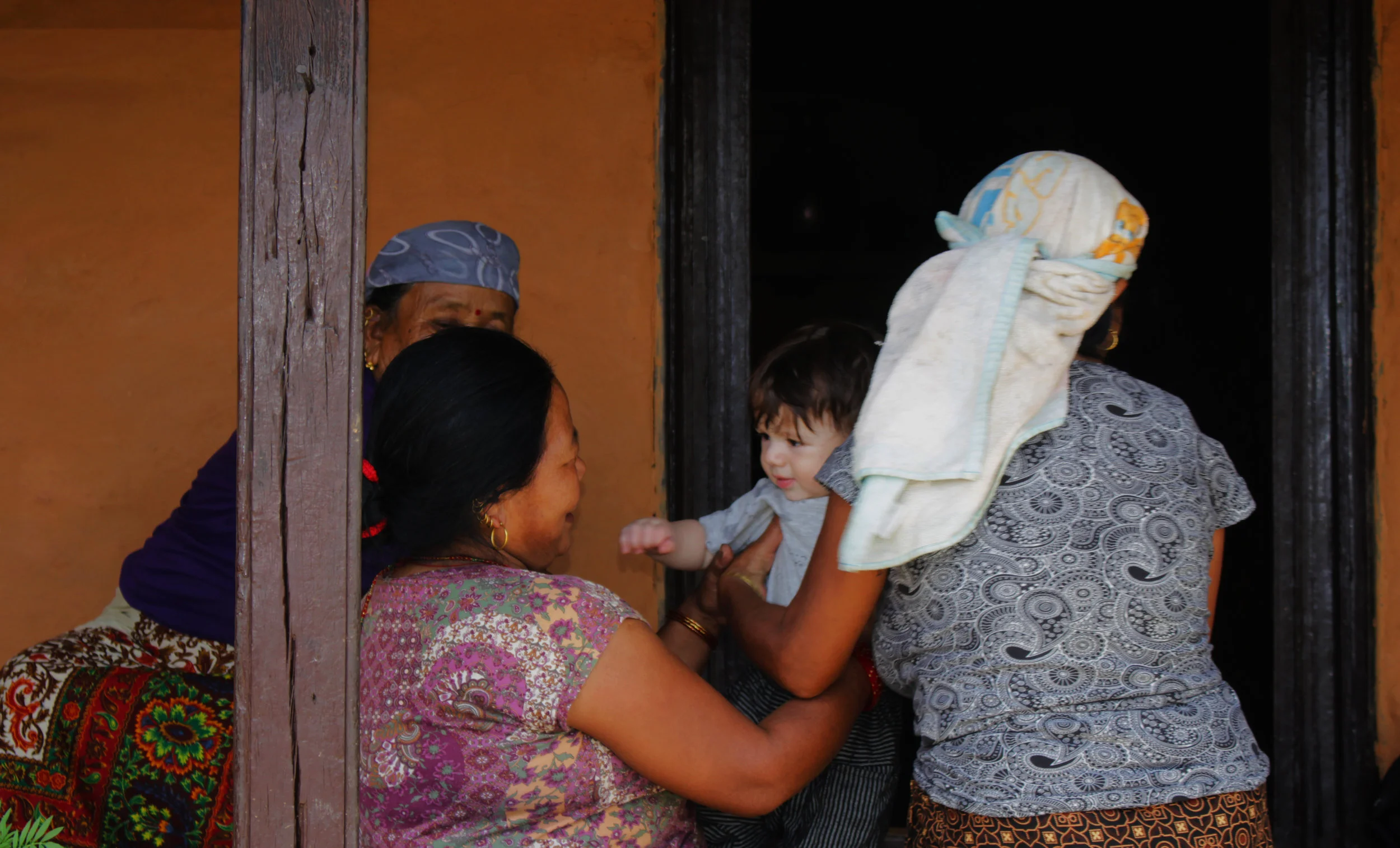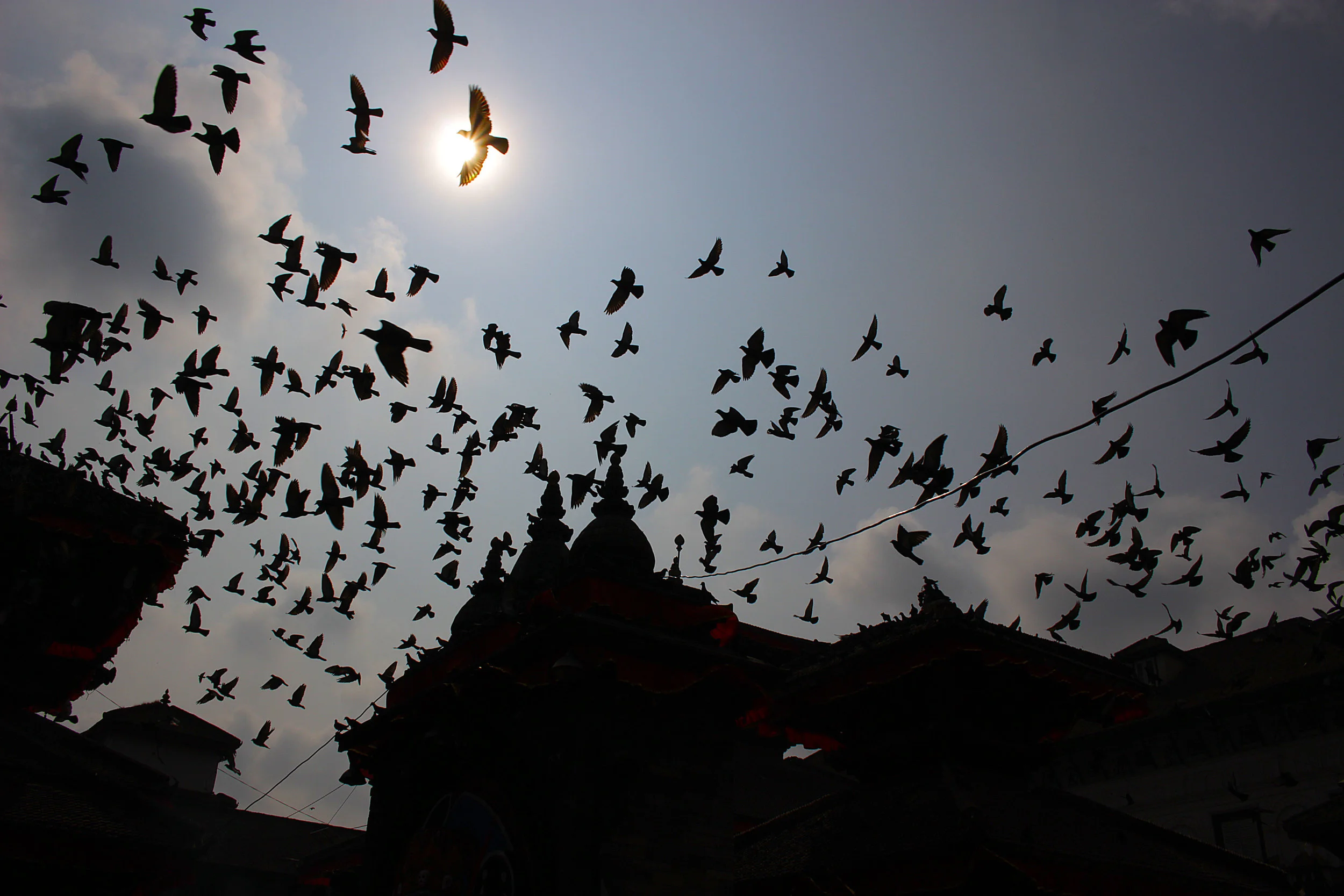The mud kitchen

As you walk barefoot across the floor of the Gurung family kitchen, you really feel the earth under your feet. Made entirely of a rust-coloured clay, it feels soft, tactile and from another time. This is where every meal at the Lwang Village Homestay is cooked, so although it’s cinematic and hopelessly romantic, nothing is there for decoration. Every item serves a purpose. Everything works. Hardworking metal trays and bowls line a wall, ready for thali service, their glint dulled by age. Drums and tambourines hang from crude hooks to provide a little musical entertainment. Only the nostalgic ring of a first-generation Nokia drags us back towards this century.
Olivia smiles innocently. She’s too young to know what that ring means, and far too distracted by the shiny pots to care. She’s not an easy one to feed, our kid. However, she’s always been fascinated with food. Not always hungry to eat, but hungry to learn. Her favourite place has always been on our kitchen worktop, between the fire and the knives, her father pottering away and talking her through the various cooking processes.
At home, we have mandolins and processors and chicken bricks and posh knives. She puts together wild flavour combinations. She’s the only four year old I know who knows the word ‘poach’. But here, we wanted to teach her the real basics. Where food actually comes from. And Lwang was the perfect place for it.
In the village, the women run the show. And they’re more than happy -if a little perplexed- to let us into the kitchen. I think most people come here for a night, a stop-off on the way to a mountain trek. They sit, they’re served, they leave the table. But this is the kind of thing that fascinates us, so in we go.
Dinner is underway, in the most wonderful, primitive, visceral way. As we pad across that orange mud floor and through the arch, the smoke intensifies and the only sounds are gentle chatter and fire at work. There are no sharp edges in this kitchen, no straight lines. It’s a series of undulating curves, sloping up to form fire pits and worktops. We’re not in IKEA anymore.
One pan sits over the flames, a simmer of rice inside, the ‘bhat’ to the ‘dal’ of lentils, onions and water hissing and rattling away in the pressure cooker alongside it. Unnameable vegetables have been plucked from the gardens and fields around the village and now sit, tamed, in bowls and sieves, waiting for their turn in the pan.
Laxmi is the main chef and undisputed boss when it comes to mealtimes. Her high cheekbones and slender frame glide around the room, checking on pots, stirring from time to time. Unflappable, untouchable and under control. More culinary Dalai Lama than Gordon Ramsay.
The day after, we start learning like we mean it. We go back even further, both in time and process. We pick apart things that children (and some adults) just assume exist, like butter and yoghurt and rice. They’re just things you buy from the shop, ready to spread, slurp or boil. Right? Wrong.
This morning, we are accompanied to Laxmi’s kitchen, another dark cave of a room in which she teaches us to make yoghurt and butter from buffalo milk, the solids starting to form as we roll the wooden rod wrapped in fraying string back and forth in its dark urn. It looks a mess but tastes like a dream when it’s poured into a glass for us to try, its acidity prickling our tastebuds awake.
We visit the tea factory, inspecting the machines that sort the tea into grades, the largest pieces sold for the highest price. A clamber up steep stone steps takes us to the two hundred year old water mill as it makes flour, and above it, the animal-shaped taps spurting mineral water. One villager gulps at one tap whilst a local teenager uses another to wash the shampoo out of her long dark hair.
Next, one for the adults. We're led to the back of one of the outbuildings, where some kind of cauldron simmers away. Tirtha takes it apart, layer by layer, talking us through the multiple distillation process from raw millet to the purest, homemade booze. As the lid comes off, a wave of alcoholic steam emerges, strong enough to get us all drunk without taking a sip.
Olivia’s new obsession, the rice mill, is a surprise hit. Tirtha, Sita, Him Kumari and other members of the family haul great graphic sacks of rice and corn into the stone room, shouting at each other in staccato Nepali over the noise of the machines. You can never quite tell if they’re angry or just completely at ease with each other. Our daughter stands in front of the mill as the rice passes through it once, then again, becoming smoother and more edible with each polishing. She optimistically wonders if the corn kernels would make her favourite snack of popcorn, then feels the soft new flour running through her fingers. She’s hypnotised.
On the morning of our departure, we sit and watch the mountains with our new favourite breakfast. A plate of crisp, fried Gurung bread, the family’s version of a traditional puri. We drench the golden puffy dough in runny Nepali honey, then sprinkle over Himalayan salt. The four of us are as quiet as we’re capable of being. Nobody asks for a cartoon.
Two days later, we are back in our Kathmandu apartment, hiding from the dust. On the table in front of us are two cups of tea, straight from the plantations at Lwang. Olivia is drawing the water mill in her daily diary. River is now referred to as Babu. We've changed a bit, in our own little way. And that’s what I think this trip will be. No seismic change, no ‘yeah man, I found myself up a mountain with my private sherpa/on ayahuasca/in my neon dreadlocks’ revelation. More a series of little moments, shifts in perspective, that will see us return different. And, hopefully, better.





























